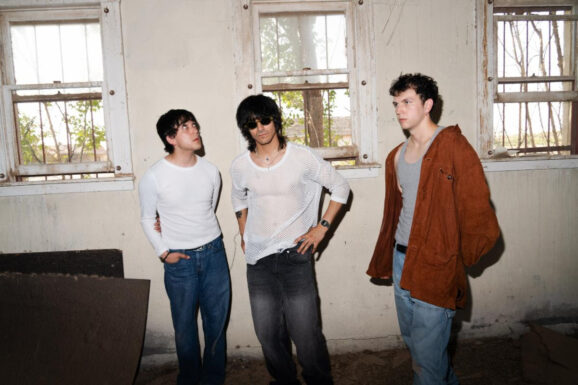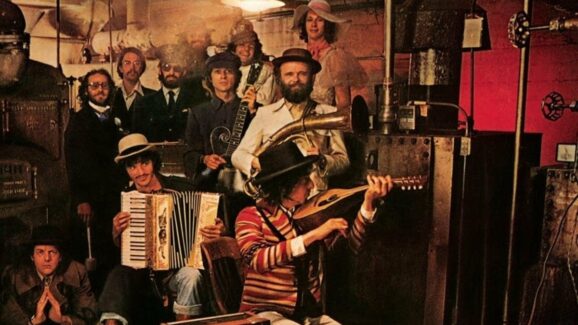[rating=8.00]
Rogue One is neither the best nor worst among the pantheon of Star Wars films. It sits safely among the middle, pushing no boundaries and changing no games, but working well within the framework it’s been provided. There are those who might mistake “middle of the road” as being something akin to “less than stellar” but that would be a mischaracterization. In the lexicon of a galaxy far, far away, middle of the road is still decidedly spectacular, which is what, above all else, a Star Wars film should strive to be.
As to that, Rogue One is a resounding success. LucasFilm (Disney) has taken a massive risk in this endeavor. The idea of making a Star Wars film outside the scope of what we’ve come to expect—no Jedi, no Skywalkers, minimal lightsabers—seems audacious and, really, it kind of is. But stripped of most of what we’ve come to know about what a Star Wars film should be, Rogue One is able to breathe and stretch it legs, becoming something of a reminder of why it is we love the series in the first place.
Like the rest of the franchise, Rogue One is a musing on good vs. evil. Good, in this case, is embodied by Jyn Erso (Felicity Jones), a rough and tumble scalawag in the vein of Han Solo imprisoned by the Empire. Evil is represented by Orson Krennic (Ben Mendelsohn), the Imperial leader who oversees the building of the Death Star, using Jyn’s father Galen (Mads Mikkelsen) as his chief engineer. Jyn, after being rescued by rebel forces, is drafted into a mission to locate her father and find plans for the superweapon in order to identify any weaknesses.
Of course, we know that said weakness exists, having already seen the Rebel Alliance exploit it in the original movie forty years ago. One might think that knowing the outcome would lessen the drama as it unfolds, but one would be wrong. Director Gareth Edwards and screenwriters Chris Weitz and Tony Gilroy ingeniously use our pre-knowledge of the outcome to focus our attention onto other matters. Rogue One offers a real boots-on-the-ground approach to the tale as we know it, giving us the only real glimpse at the reality of this galactic civil war that we’ve ever been given.
Previous movies have been heavy on the fantasy elements of the Star Wars universe, owing heavily to creator George Lucas’ areas of interest. For all the battles we see, we never see the effects of war on the citizens of the galaxy. Here, we’re taken directly into conflict to get a better idea of how this war plays out from a citizen’s perspective.
Children cry as blasters ring out; regular people flee as rebel forces face off against Stormtroopers. It’s a gritty view of Star Wars, one that puts everything that Luke, Leia, and Han eventually fight for into new light. While the prequel trilogy shed light onto the Machiavellian machinations of the Emperor and the government he wished to usurp, and while the original trilogy made sure we knew that the Empire was evil (it doesn’t get much more evil than blowing up a planet, after all), never before have we gotten to see what daily life must have been like for the denizens of this universe.
No, previous films have shown us this universe from the perspective of the people in power. We like to think of Han, Luke, and Leia as part of a ragtag team of upstarts, but the truth is that they all wield considerable power and influence from their position as generals. It would be like a Vietnam War movie told from the perspective of McNamara and Westmoreland—interesting, sure, but the human effects are lessened considerably. Here, we see the war from the perspective of the grunts. Jyn and her crew are little more than pawns of the Rebel Alliance, and even Krennic is a marginalized force within the Imperial chain of command. This allows for considerable forays into grey areas—good is accomplished through questionable means; evil is enacted through laudable goals.
Because the reality is that war is dirty and war is hell. Even wars that take place among the stars. Odd as it feels to say, Rogue One is a grounded film. Stripped of (most of) its fantasy elements, as it is here, Star Wars becomes something entirely different, and entirely real. That’s a fine line to walk, and it would be very easy for one misstep to cause the whole idea to collapse in on itself.
It doesn’t, however. Rogue One, in fact, despite not necessarily changing the game in any meaningful way, narratively speaking, ranks among the top 50% of Star Wars films, easily besting the entire prequel trilogy and Return of Jedi in terms of quality. The middle of the road/give em what they want approach to the film works as well as one could hope, creating a Star Wars story that will at the very least please fans, if not downright delight them.
It’s everything you want from a Star Wars movie, packaged in a way you never knew you wanted. This mix of the old and the new bodes well for their plans for an anthology series overall, and if Disney keeps, at the very least, meeting the bar they set here, fans will have plenty more to look forward to in the coming years. There’s no need for mind tricks to convince you that the force is strong with this one. Here’s hoping the trend continues as both the saga and the anthology goes on.
Rogue One opens everywhere on December 16.











